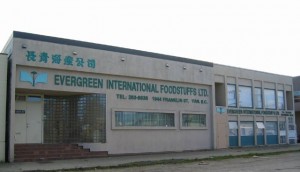Our findings show that ample opportunity for food recovery exists in Vancouver. Geographically speaking, there are a significant number of potential donors and recipients in favourable proximity to each other, yet the two sides are not utilizing each other effectively. When comparing our “potential” list to our “current” list, we can see that only a small percentage of these donors are actually donating the food that they would otherwise throw away. Similarly, a surprisingly large number of non-profit meal providers in Vancouver are not using recovered food, but are instead contracting out private kitchens or purchasing food themselves. Of the ones that actually do rely on donations, many of them don’t use donated food exclusively. This shows us that location and physical logistics are not major barriers to food recovery in Vancouver. The barriers appear to be much more prominent in business policy and practice as well as food safety and legal concerns, even with the implementation of the Good Samaritan Law (which basically states that anyone who donates or distributes donated food is not liable for damages caused by the consumption of the food).
We had expected that it would be difficult to identify which potential donors are actually currently involved in food recovery and to what extent, due to businesses not wishing to disclose their practices. (We were right, this was tricky!) But what we didn’t expect was how difficult it would be to find details about the food being donated. Many recipients have been unable to disclose any information regarding their donation sources or the amount, quality and type of food they receive. We have not yet heard back from some of the potential donors and recipients that we have contacted, so we hope to get a few more useful responses before we finish our final report.
When compiling our data, we also ran into the issue of clearly defining “donor” and “recipient” in the context of our project. We realized that for our purposes, we cannot consider those companies that donate food that they otherwise would have sold to customers or make cash donations to food-providing organizations “donors”. Along the same lines, we cannot label the food-providing organizations that receive these types of donations “recipients”. Because our project strictly concerns food recovery, we can only include businesses or organizations that contribute to food recovery; meaning they must either donate or receive food that would alternatively be thrown out or wasted.
We are now in our final stages of compiling our completed current and potential donor and recipient lists and creating our map of Vancouver food recovery channels.


